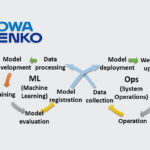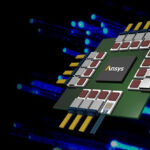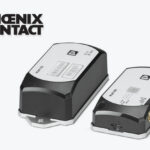ASIA ELECTRONICS INDUSTRYYOUR WINDOW TO SMART MANUFACTURING
Tech Group Co-Creates New Ozone Monitor for Thin Film Deposition
Tokyo Electron Co., Ltd. (TEL), Fujikin Inc., and TMEIC Corp. have announced the development of an innovative monitor for controlling ozone concentration in semiconductor thin film deposition processes. Also, the new monitor will undergo full testing for use (installation) on ozone gas generators.
Specifically, this joint development constitutes part of TEL’s E-COMPASS supply chain environmental initiative.

Background
During semiconductor fabrication, thin film formation processes employ ozone to produce a variety of oxide films. Generally, it requires keeping a close watch on the condition and performance of the ozone gas generator. Thus, this process necessitates a reliable ozone concentration monitor.
One of the established techniques for measuring ozone concentration is the ultraviolet (UV) absorption method, which leverages the ozone’s strong absorption of UV wavelengths. A drawback of this method is the conventional use of a mercury lamp as the light source, which contains a hazardous material and needs to be replaced periodically*1.
To address this problem, TEL, Fujikin, and TMEIC have chosen to co-create an ozone concentration monitor and an ozone gas generator that are mercury-free and maintenance-free.
Features and Benefits of the New Ozone Concentration Monitor
1. The newly developed monitor features an LED UV light source to offer high reliability comparable to or surpassing that of conventional monitors.
2. The monitor does not use mercury and therefore is free of environmentally hazardous substances.
3. Mercury lamps of previous monitors had to be replaced every two years. Meanwhile, the durable LED light source of the new monitor is usable for 10 years or more with no need for replacement. Thus, it makes the light source maintenance-free.
4. The use of LED reduces the monitor’s power consumption from 25 to 3W (88% less than that of an existing monitor). The saving is equivalent to a reduction of 77.1 kg of CO2 emissions (77.1kg-CO2e*2) per monitor per year.
Environmental Value: Reducing CO2e Emissions and Running Cost
The newly developed ozone concentration monitor is being used with semiconductor production equipment as well as ozone gas generators. The demand for ozone gas generators might double in the next five years. By using this new monitor instead of conventional ones, CO2e emissions can be reduced by 310 ton-CO2e. Also, the lamp replacement cost is lower by about 100 million yen, according to an estimate.
Environmental Technology Co-Creation by the Three Companies
In this environmental technology co-creation initiative, Fujikin and TEL jointly developed the ozone concentration monitor. Meanwhile, TMEIC installed the monitor on its ozone gas generator to test and verify performance. Collectively, this ensures the monitor is suitable for diverse applications including TEL’s semiconductor production equipment and auxiliary facilities.
Digitalization and greening of society will become a major global trend in the coming years. Therefore, TEL commits to pursuing closer cooperation with its business partners. In relation, it will produce equipment free of environmentally hazardous materials and proactively develop environmental technologies for its equipment. As TEL pursues these activities, the company seeks to uphold its corporate philosophy that states, “We strive to contribute to the development of a dream-inspiring society through our leading-edge technologies and reliable service and support.”
For reference:
Tokyo Electron Introduces E-COMPASS, a Supply Chain Initiative for the Environment
https://www.tel.com/news/topics/2021/20210616_001.html
*1: The Minamata Convention on Mercury provides control over high-pressure mercury vapor lamps for general lighting purposes. UV lamps used in ozone concentration monitors are exempt from this control because they are used for other specific purposes.
*2: CO2e: Carbon dioxide equivalent
-31 May 2024-




